Index terms
|
| Wi-Max technology, mobile SCADA, Tiva Processor, Solar PV Cells, Sensors, Proteus 7 Professional. |
INTRODUCTION
|
| Solar power is the conversion of sunlight into electricity by directly using photovoltaic cells. Photovoltaic cells convert light into electric current using the effect. Photo-voltaic cellsare used to power small and medium-sized applications, from the calculated powered by a single solar cell to off-grid homes powered by a photovoltaic array. They are an important and relatively inexpensive source of electrical energy where grid power is inconvenient, unreasonably expensive to connect, or simply unavailable. However, as the cost of solar electricity is falling, solar power is also increasingly being used even ingridconnected situations as a way to feed low-carbon energy into the grid. Solar energy is going to be the future of power generation in coming times. Since it’s a clean and most easily accessible renewable form of energy, many developments are being made in this field to utilize this solar energy to maximum utilization. |
| Now-a-days many buildings are being made which require a lot of power consumption. Many malls are being constructed. It results in development of a nation but we must also think that due to construction of these big malls a huge amount of electricity is also required for maintenance and running of these malls. Hence we have come forward with an idea of efficiently utilizing the energy sources so that conventional energy could be less utilized and depending on the demand we could switch over to conventional source or renewable source. This is not only applicable in malls but also applicable in big residential buildings, colleges and offices too. |
| The biggest disadvantage which we currently face while use of solar energy is that there is no proper controlling and monitoring of the solar energy. It’s a different thing to implement the solar energy and it’s a different thing to monitor the parameters. Where we lack in today’s technology is that we are unable to monitor the parameters. Hence we have used a new technology called mobile SCADA system by which we could efficiently monitor these parameters and also use the solar power efficiently. |
BLOCK DIAGRAM
|
A. Wi- Max Technology
|
| Wi-Max (Worldwide interoperability for microwave access) is a wireless communication standard design to provide 30 to 40 mega bit per second data rate. Wi-MAX is "a standards-based technology enabling the delivery of last mile wireless broadband access as an alternative to cable and DSL. |
| The bandwidth and range of WiMAX make it suitable for the following potential applications: |
| • Providing portable mobile broadband connectivity across cities and countries through a variety of devices. |
| • Providing a wireless alternative to cable and digital subscriber line (DSL) for "last mile" broadband access. |
| • Providing data, telecommunications (VoIP) and IPTV services (triple play). |
| • Providing a source of Internet connectivity as part of a business continuity plan. |
| • Smart grids and metering |
| From the above graph we can say that Wi-Max has good mobility compared to Wi-Fi and other technologies. |
B. 8 bit controller
|
| To perform the various operations and conversions required to switch, control and monitor the devices a processor is needed. The processor may be a microprocessor, micro controller or embedded controller. In this project an embedded controller has been preferred because of its industrial advantages in power electronics like built in ADC, RAM, ROM, ports, USART, DAC. This leads to lesser space occupation by the circuit and also the speed of embedded controllers are more compared to other processors. The embedded controller selected for this project is PIC16F877A due to its various features such as |
| • Real time mechanical model. |
| • Industry standard solar cell. |
| • Works at very low to high intensities. |
| • Light level indicators on graphics. |
| • Recording of all parameters in real time. |
C. Signal Conditioner
|
| The Signals received from the field may not be suitable directly for ADC and further processing. In such case, the signal may need amplification to improve sensitivity, remove unwanted frequencies, and allow frequencies of specified range. Finally signal should also have Dynamic Response Range. |
| Signal Conditioner should have a protection to save ADC and itself during abnormal electrical ranges. |
D. Sensors
|
| Here we are using current transformers as a sensors so as to detect the load and give the rating of the load.. From this we can decide how much one load is consuming and we can get a digital display of the load consumption. We can get digital display by use of LCD Display. |
E. Inverter
|
| Inverters an electronic device or circuitry that changes direct current (DC) to alternating current (AC).The input voltage, output voltage and frequency, and overall power handling, are dependent on the design of the specific device or circuitry. Here the solar supply used in the battery will be the dc storage but for the appliances to run we need ac supply so for this conversion of DC to AC we use inverter here. |
F. Battery
|
| An electric battery is a device consisting of one or more electrochemical cells that convert stored chemical energy into electrical energy. Each cell contains a positive terminal, or cathode, and a negative terminal, or anode. Electrolytes allow ions to move between the electrodes and terminals, which allows current to flow out of the battery to perform work. We need to store the energy coming from the solar hence we need a battery to store the energy. |
G. Solar PV cells
|
| Photovoltaic (PV) is a method of generating electrical power by converting solar radiation into direct current electricity using semiconductors that exhibit the photovoltaic effect. Photovoltaic power generation employs solar panels composed of a number of solar cells containing a photovoltaic material. Materials presently used for photovoltaic include mono-crystalline silicon, polycrystalline silicon, amorphous silicon, cadmium telluride, and copper indium gallium selenide/sulfide. Due to the increased demand for renewable energy sources, the manufacturing of solar cells and photovoltaic arrays has advanced considerably in recent years. |
H. Mobile SCADA
|
| SCADA itself is a supervisory device which is used to control and monitor the parameters of electrical system. We can transfer these parameters using ZIGBEE technology. The name mobile refers to that we can track the changes in parameters in any mobile devices for eg in our mobile phones itself. Thus it will be easy to monitor the parameters. Using ZIGBEE the parameters of the load that is being obtained are transmitted to the system where it needs to be monitored. |
| The monitoring system could be live on internet or on any display system(computer screen or mobile phone). |
I. Relay
|
| Our project is basically about switching of loads and relay is a very important part in our project. The microcontroller gives the instruction to relay to switch over to the loads. Here we are using a simple electromagnetic relay. A simple electromagnetic relay consists of a coil of wire wrapped around a soft iron core, an iron yoke which provides a low reluctance path for magnetic flux, a movable iron armature, and one or more sets of contacts (there are two in the relay pictured). The armature is hinged to the yoke and mechanically linked to one or more sets of moving contacts. It is held in place by a spring so that when the relay is de-energized there is an air gap in the magnetic circuit. In this condition, one of the two sets of contacts in the relay pictured is closed, and the other set is open. Other relays may have more or fewer sets of contacts depending on their function. The relay in the picture also has a wire connecting the armature to the yoke. This ensures continuity of the circuit between the moving contacts on the armature, and the circuit track on the printed circuit board (PCB) via the yoke, which is soldered to the PCB. |
BRIEF EXPLANATION OF BLOCK DIAGRAM
|
| The transmission and receiving ends both contain the common components such as Wi-MAX router, TIVA processor and signal conditioning. The rooms in a building(block) are connected with the temperature and light intensity sensors which sense the voltage and current requirements in that particular room. The obtained parameters are then passed onto the signal conditioning where the analog form of parameter obtained is converted into digital form. The output from signal conditioning is given to the TIVA processor which is nothing but an8 Bit microcontroller that communicates with the SCADA system. The output is then fed to the receiving side through Wi-MAXand the parameters thus obtained from the load in different blocks of a building are conditioned and displayed on the mobile phone which a person can carry with him within the range of Wi-MAX connectivity. The supply for a particular block or a particular room in that block can either be provided or restricted using the sensors and the person who carries the mobile phone has the reach with the parameters continuously wherein any difference in normal operation may be indicated on the mobile phone as in case of any other stationary SCADA system. |
RESULT AND DISCUSSIONS
|
CONCLUSION
|
| Thus by the use of this project we have lessen the use of conventional sources in large buildings and enhanced the use of solar sources and loads being operated by solar. This in turn reduces the use of conventional sources and gives us a chance to conserve conventional sources of energy to utilize for future use. |
Figures at a glance
|
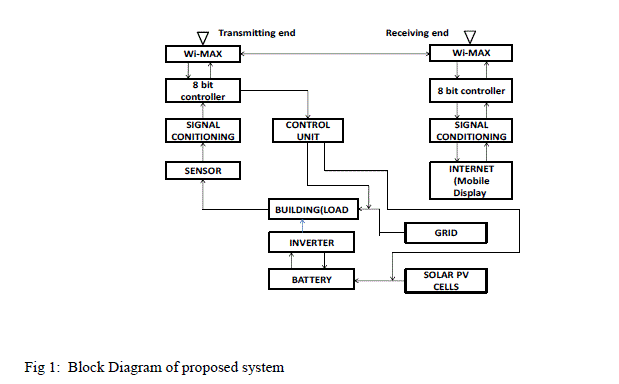 |
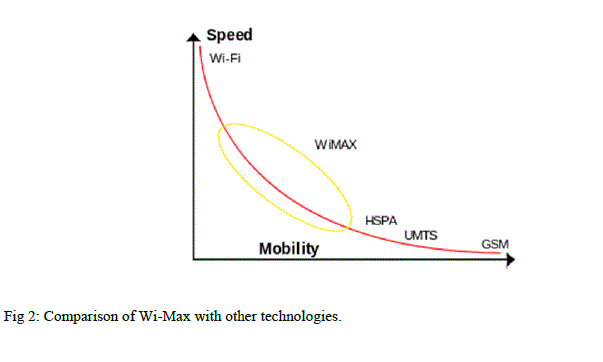 |
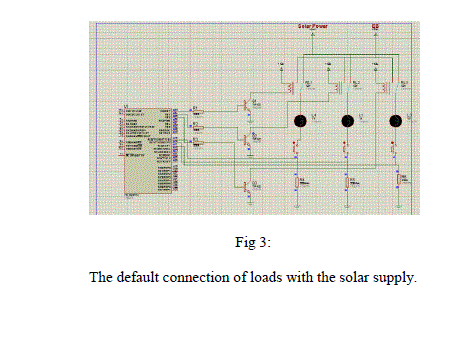 |
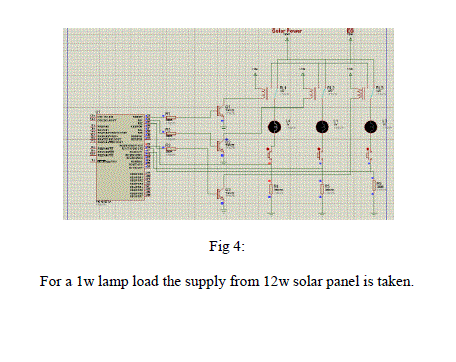 |
| Figure 1 |
Figure 2 |
Figure 3 |
Figure 4 |
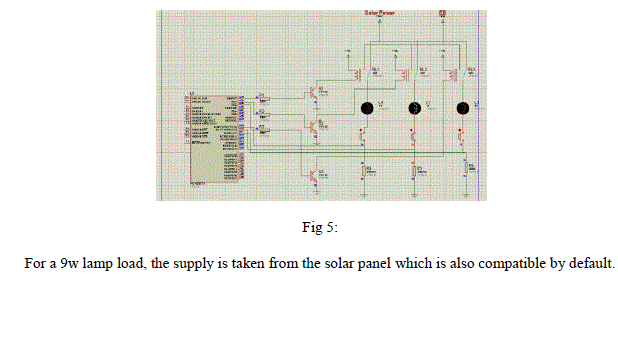 |
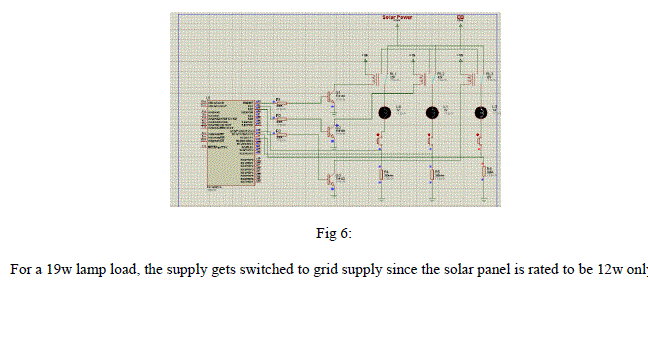 |
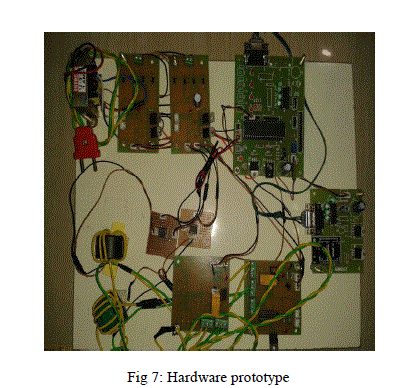 |
| Figure 5 |
Figure 6 |
Figure 7 |
|
References
|
- MA Zhiliang, ZHAO Yili “Model of Next Generation Energy-Efficient Design Software for Buildings” TSINGHUA SCIENCE AND TECHNOLOGY ISSN 1007-0214 48/67 pp298-304 Volume 13, Number S1, October 2008
- XiangjunLi “Battery Energy Storage Station (BESS)-Based Smoothing Control of Photovoltaic (PV)” IEEE TRANSACTIONS ON SUSTAINABLE ENERGY, VOL. 4, NO. 2, APRIL 2013
- Kai Strunz, EhsanAbbasi, Duc Nguyen Huu“DC Micro-grid for Wind and Solar Power Integration” IEEE JOURNAL OF EMERGING AND SELECTED TOPICS IN POWER ELECTRONICS, VOL. 2, NO. 1, MARCH 2014
- AlexandreBeluco, Paulo K. Souza e Arno Krenzinger “PV hydro hybrid systems” IEEE LATIN AMERICA TRANSACTIONS, VOL. 6, NO. 7, DECEMBER 2008
|